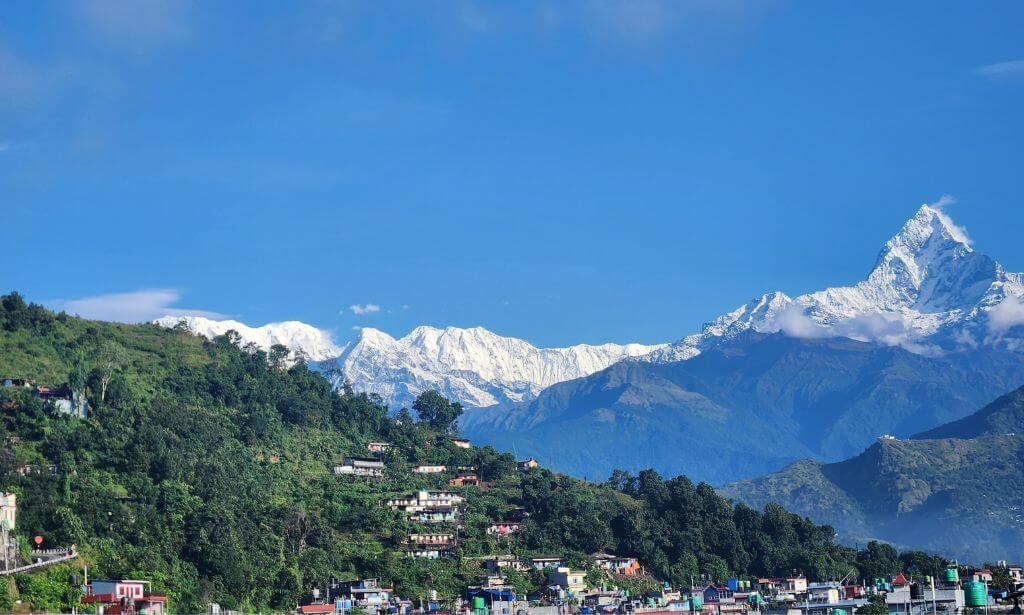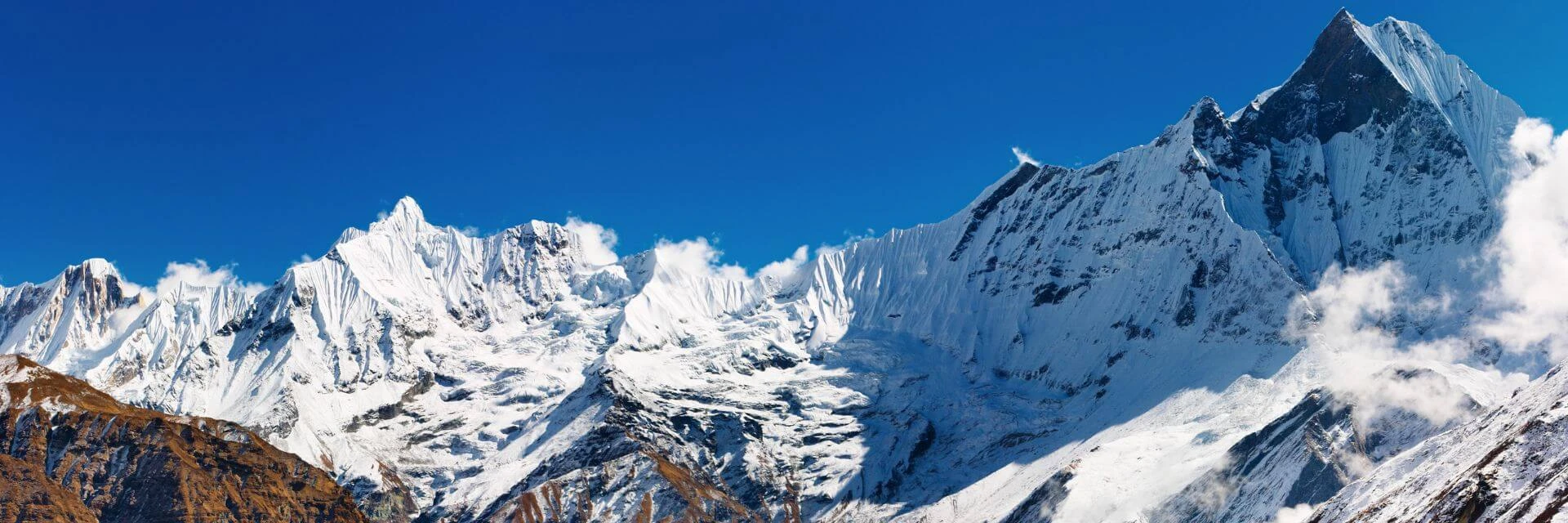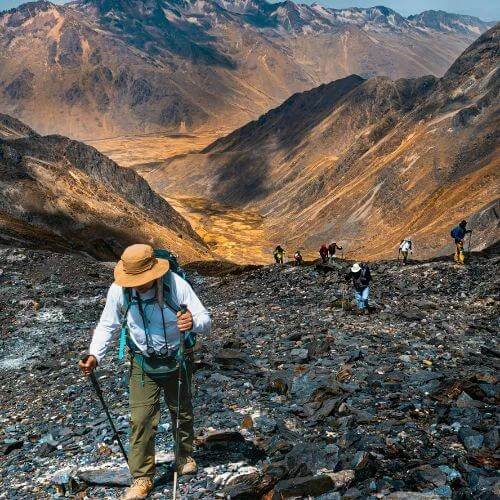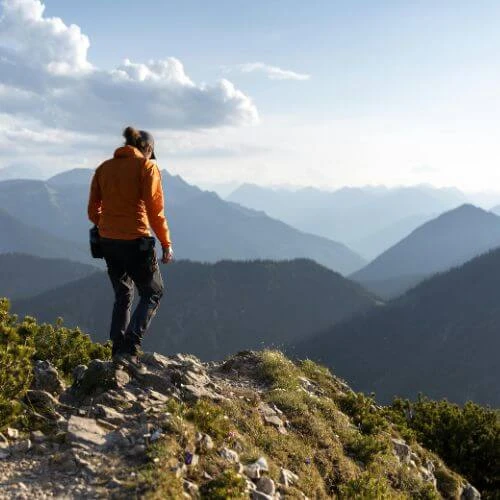Packing the right gear for the Annapurna Circuit Trek is one of the most important steps before you start your adventure. Having the right equipment keeps you safe, comfortable, and energized for long days on trails that go from tropical valleys to high-altitude passes. The Annapurna Circuit Trek Gear list we have here will cover everyting you need for the duration of the journey. We will also be discussing travel tips on how you can approach the gear up factor.
Smart packing also makes your load lighter, helping you move faster, stay less tired, and enjoy the trek more. In this guide, we’ll cover all the essential gear, including clothing, footwear, trekking equipment, accessories, and tips for packing smart.
Skip the packing confusion. Abound Holidays provides a ready-to-use gear checklist and expert packing guidance when you book your trek.
Annapurna Circuit Trek Gear Overview
Before diving into the details, it helps to know the overall plan for your gear. Your Annapurna Circuit Trek gear can be grouped into several categories: backpack and luggage, clothing, footwear, essential trekking equipment, and accessories for health and hygiene.
The goal is to keep your total pack under 12 kilograms, making trekking easier and more enjoyable. Each item listed below is chosen to maintain comfort across different temperatures, altitudes, and trail conditions.

The sections below are made for quick reading, so you can easily find the gear you need and know why it’s important for the Annapurna Circuit Trek.
1. Choosing the Right Backpack and Luggage
Your backpack is the foundation of your trek. Choosing the right pack and knowing whether to carry it yourself or hire a porter makes your journey more comfortable and balanced. A well-fitted backpack protects your back and shoulders while keeping your gear organized.
Day Pack vs Main Duffel
- Use a 30–40L day pack for items you’ll need every day, such as water, snacks, layers, camera, and first-aid kit.
- If using a porter service, a 60–70L duffel bag works for heavier items you don’t need daily.
- Get padded shoulder straps and hip belts to distribute weight evenly.
Carrying vs Using a Porter
- Keep your own pack under 12 kg for comfort on long hiking days.
- If hiring a porter, the duffel can be around 15 kg, while you carry just the day pack.
- Pack heavier items at the bottom and lighter ones on top for balance.
Rain Cover and Fit
- A waterproof rain cover protects your pack from sudden rain or snow.
- Adjust the straps for a snug fit on your back and hips.
- Check that the weight sits comfortably without pulling your shoulders forward.
2. Clothing for the Annapurna Circuit Trek
Clothes are really important for staying comfortable and safe. Wearing layers is the best because it can be really warm in the valleys and really cold up in the mountains. Picking clothes that dry fast, breathe well, and keep you warm helps you stay ready for any weather. Estimated total weight: 3 - 4 kg.
Base and Mid Layers
- Moisture-wicking base layers for hiking and sleeping prevent chills from sweat.
- Lightweight fleece or synthetic mid-layers for warmth during cool mornings or evenings.
- Quick-dry shirts and leggings save weight and dry fast if washed on the trail.
Outer Shell and Down Jacket
- Waterproof shell jacket to stay dry in rain and wind.
- Down jacket for high-altitude warmth, especially near Thorong La.
- Make sure jackets fit comfortably over mid-layers without restricting movement.
Lower Body Clothing
- Trekking pants that are durable and allow movement.
- Thermal leggings for cold nights or high passes.
- Casual pants or shorts for teahouse evenings.
Socks, Underwear, and Sleepwear
- Multiple pairs of quick-dry socks to prevent blisters.
- Thermal underwear or leggings for sleeping in cold rooms.
- Comfortable, lightweight sleepwear for teahouses.
Packing smart makes a big difference. When you book with Abound Holidays, our guides review your gear in Kathmandu to make sure you’re fully ready before the trek begins.
3. Footwear and Leg Gear
Your feet will take the brunt of trekking, so having the right footwear is essential for comfort and safety. Proper shoes or boots, along with additional leg gear, reduce fatigue and risk of injury. Estimated section weight: 1.5–2 kg total.
Trekking Boots or Shoes
- Waterproof boots with ankle support prevent twists and injuries.
- Already broken-in boots reduce the chance of blisters.
- Wear comfortable trekking socks to complement your boots.
Teahouse Footwear and Sandals
- Sandals or slippers for wearing inside the teahouse.
- Let your feet breathe and dry after hiking.
- Good for chilling in the evenings at teahouses.
Gaiters and Rain Pants
- Optional but useful in snow, rain, or muddy trails.
- Protect boots and lower legs from water and debris.
- Makes trekking in wet or sloppy conditions safer and comfortable.
4. Essential Trekking Equipment
Having the right gear makes trekking safe, fun, and easier. From sleeping to finding your way, this stuff helps you be ready for anything. Estimated total weight: 2 - 3 kg.
Sleeping Gear
- A down sleeping bag rated for sub-zero temperatures.
- Sleeping liner for hygiene and extra warmth.
- Get a lightweight and compressible sleeping bag that is easy to pack.
Trekking Tools
- Trekking poles for balance and reduced strain on knees.
- Headlamp for early starts or night use.
- Hydration system: bottles or bladder to stay hydrated.
Electronics and Power Setup
- Power bank for charging electronics on the trail.
- Adapters (Type C/D) for Nepal outlets.
- Optional solar charger for extended trips.
Navigation Tools
- Download offline maps ahead of the trek or GPS apps to follow your route.
- Keep a paper map as a backup if your phone stops working
- Bring a compass as an extra safety tool for high mountain passes.
5. Accessories, Health, and Hygiene
Small but important items help you stay healthy and comfy during the trek. Things like sun protection, first-aid, and hygiene stuff are needed for a stress-free trip. Estimated total weight: 1–1.5 kg.
Sun and Cold Protection
- Sunglasses to protect against UV rays and snow glare.
- Hat, gloves, and a buff for wind and cold that passes from time to time.
- Sunscreen for high-altitude protection.
Personal Hygiene Essentials
- Use biodegradable soap and hand sanitizer.
- Bring a small towel and wet wipes to clean up easily.
- Pack your toothbrush, toothpaste, and other personal items.
First-Aid and Medical Items
- Blister patches and basic medicine injuries during the trek.
- Altitude sickness tablets like Diamox for high-altitude trek.
- Painkillers and antiseptic wipes for emergencies.
Snacks and Hydration
- Energy bars and rehydration salts.
- Water purification tablets or a filter for safe drinking water.
- Small snack bag for long hiking days.
6. Packing by Season and Terrain
Gear needs to change depending on the season and terrain. Adjust your packing list to stay comfortable and safe in all conditions. Estimated section weight: may vary ±1 kg depending on season.
Spring and Autumn Packing
- Wear light layers for warm days.
- Bring a fleece layer for cooler mornings and evenings.
- Use medium-warm clothes for comfort at night.
Monsoon and Winter Packing
- Waterproof outerwear and dry bags for wet conditions.
- Thicker layers and insulation for cold.
- Extra socks and gloves to stay dry and warm.
For the High Pass (Thorong La)
- Extra insulation for extreme cold.
- Windproof face buff and warm gloves.
- Layering is key for changing temperatures along the pass.
7. Renting or Buying Gear in Nepal
You don’t need to bring everything from home. It is recommended to buy things that you will be using on a regular basis. As for the other equipment you need for trekking, you can rent it near the trekking destinations to save money, make your bag lighter, and still get good-quality gear. Estimated savings: up to 40% compared to buying new.
Rental Options in Kathmandu or Pokhara
- Sleeping bags, jackets, and trekking poles are available at daily rates.
- Can save up to 40% compared to buying new.
- Inspect equipment for zippers, insulation, and waterproofing.
What to Bring from Home
- Boots, socks, and base layers that require a perfect fit.
- Items that are difficult to replace locally.
- Personal comfort gear for sleeping or hiking.
How to Check Quality
- Check waterproofing, stitching, and insulation.
- Test zippers and straps before leaving the city.
- Ask for recommendations from local experts.
We at Abound Holidays also have a list of trusted gear rental shops with national and international brands in Thamel, Kathmandu.
8. Maintenance, Repair, and Safety Gear
A small repair and safety kit can stop little problems from becoming big ones. It’s a good idea to always bring a repair kit on the trek. Estimated total weight: 0.5–1 kg.
Quick-Fix Kit
- Bring duct tape, a multi-tool, and spare laces for different uses.
- They help fix small gear problems fast.
- They are light and easy to carry.
Foot and Gear Care
- Bring blister patches and ointments for long treks.
- Keep your boots and clothes clean so they last longer.
- Use quick-drying methods for wet gear.
Emergency Gear
- Whistle, space blanket, and emergency contact card.
- Adds an extra layer of safety in the event of an accident.
- Easy to access in your day pack.
Final Thoughts
Booking with Abound Holidays ensures your trek is as smooth as possible. Our team provides a complete gear checklist tailored to your trip, helps you rent or buy quality gear in Kathmandu or Pokhara, and reviews your pack before departure.
With expert guidance, you’ll know exactly what to pack, how to pack efficiently, and what to adjust for season or terrain. This list of of Annapurna Circuit Trek gear covers everything from backpacks and clothing to footwear, essentials, and accessories — all organized to make your trek safer, lighter, and more comfortable.
Trek smarter and lighter with local professionals. Book your Annapurna Circuit Trek with Abound Holidays and get your full gear checklist prepared by our team before you leave Kathmandu. Contact us for further inquiry.
FAQs
What are the must-have gear items for the Annapurna Circuit Trek?
The must-have gear items for the Annapurna Circuit Trek are a backpack, trekking boots, layered clothing, a down sleeping bag, trekking poles, a first-aid kit, a hydration system, and navigation tools.
Can I rent trekking gear in Kathmandu or Pokhara?
Yes, jackets, sleeping bags, and trekking poles are available at affordable daily rates.
How much should my backpack weigh for the trek?
Keep your pack under 12 kg for comfort. If using a porter, duffel bags can be around 15 kg.
What sleeping bag rating do I need for Thorong La Pass?
You should use a sleeping bag that works in below-zero temperatures. It’s best to have one that’s good for all seasons.
Are trekking poles necessary on this route?
Yes, if you are not experienced in trekking, then these trekking poles will help you with balance and reduce strain, especially on steep or uneven trails.
How do I pack differently for winter and monsoon?
Include waterproof layers, dry bags, and thicker insulation for cold and wet conditions.
Can beginners rent all their gear locally?
Most gear is available for rent, but boots, socks, and base layers are best brought from home.
What type of boots are best for mixed terrain?
Waterproof boots with ankle support that are already broken in would be the best for mixed terrain.


 based on 5 reviews
based on 5 reviews


